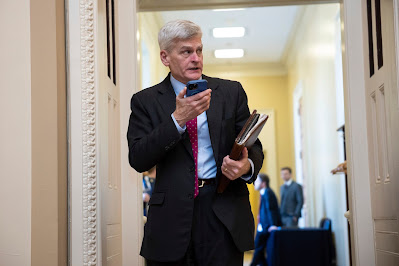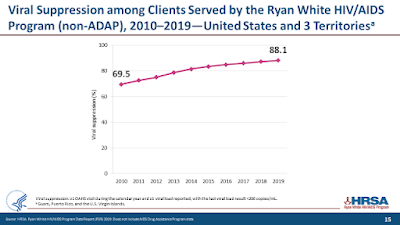By: Ranier Simons, ADAP Blog Guest Contributor, and Marcus J. Hopkins, ADAP 340B Consultant
The Trump Administration’s policies continue to generate uncertainty and disarray in most sectors of the economy in the United States, especially healthcare. On May 12, 2025, another executive order aimed at “reducing prescription drug costs” was signed. The President issued Executive Order (EO) 14297, ‘Delivering Most-Favored-Nation Prescription Drug Pricing to American Patients’, with the false claim that prescription drug and pharmaceutical prices will be reduced, almost immediately, by 30% to 80%. In actuality, the EO is vague, flawed, and has the potential to do damage to many areas within the healthcare ecosystem. The EO was presented as a strong-armed mandate to effect swift change to the status quo. However, STAT’s Matthew Herper reported, "As pharmaceutical investors see it, he stomped loudly and wielded a wet noodle" (Herper, 2025).
 |
| Photo Source: The White House |
The premise of the EO is that the status quo of what the United States pays for prescription drugs compared to other developed foreign markets is unfair; thus, the imbalance needs to be corrected. The narrative presented is that drug manufacturers are taking advantage of American consumers and the government by charging the United States exorbitant prices for drugs to offset the low prices other foreign governments demand for the same drugs. A direct quote from section one of the EO states, “Drug manufacturers, rather than seeking to equalize evident price discrimination, agree to other countries’ demands for low prices, and simultaneously fight against the ability for public and private payers in the United States to negotiate the best prices for patients.”
According to the nonprofit RAND Corporation, a nonpartisan research organization, the United States pays almost three times what approximately 33 other comparatively developed nations pay for the same prescription drugs (Mulcahy, Schwam & Lovejoy, 2024). However, RAND Corporation’s 'apples to apples' findings ignore numerous factors that separate the United States from the other developed nations, thus calling into question the simplified comparison.
The following is an overview prepared by ADAP Advocacy on how the mechanisms of the EO describe solutions to the problem, including relevant notes:
- Ordering the Secretary of Commerce to identify “foreign nations freeloading”—a catch-all term that will attempt to identify any “act, policy, or practice” that may be “unreasonable or discriminatory” or that “may impair United States national security and that has the effect of forcing Americans to pay for a disproportionate amount of global pharmaceutical research and development, including by suppressing the price of pharmaceutical products below fair market value.” (Editor's Note): This process is unlikely to consider that almost all these developed nations do not use the free-market for-profit healthcare model used by the United States, but have implemented a Universal or Single-Payer healthcare model. This means that there is one organized purchaser of these medications. If pharmaceutical companies wish to sell their products in those countries, they can either agree to the terms that those nations specify for the drugs or refrain from selling their drugs there. Meanwhile, in the United States, a patient's price for a drug can vary significantly from patient to patient, depending on their insurer. This means that every single payor (except for Medicare) must negotiate with pharmaceutical companies to determine what price they will pay, and those negotiations are protected by “trade secrets” laws that shield the entire process from consumers and most lawmakers.
- Enabling direct-to-consumer sales of drugs from pharmaceutical companies to patients. This is an interesting proposal that can potentially eliminate several middlemen from the existing domestic drug procurement and purchasing system. (Editor's Note): Currently, by the time a patient actually purchases a medication from their pharmacist, it has already passed through at least two middlemen—drug wholesaling companies and pharmacy benefit managers (PBMs)—and each middleman is attempting to make a profit. This means that, even if the starting acquisition cost of a medication is $20/bottle, to make a profit, the wholesaler will mark up the cost to $22/bottle, which will require the pharmacy to mark up the cost to $24/bottle…but then, for the PBM to make a profit, they will pocket a percentage of the reimbursement to the pharmacy, which will necessitate increasing the price to $26/bottle in order for the pharmacy to make a profit.
- By allowing pharmaceutical companies to sell their drugs directly to patients, the Trump Administration could potentially decrease consumer costs, but risks putting pharmacies out of business or creating a model where pharmaceutical companies could purchase pharmacies outright and increase their profits while putting local and community pharmacies out of business.
- Enabling “Most-Favored-Nation Pricing” (MFN) by instituting price controls through administrative rulemaking. This would allow the Secretary of the U.S. Department of Health and Human Services (HHS) to request that pharmaceutical manufacturers come to the table with the federal government to agree upon a maximum price that they can charge for medications in the United States. This would first be done voluntarily…with the threat of involuntary price controls and the removal of drug approval by the U.S. Food and Drug Administration (FDA).
 |
| Photo Source: Market.us Media |
If pharmaceutical companies don’t agree to the terms set forth by this administration, the various Department Secretaries are empowered to:
a.) Propose a rulemaking plan that would “impose most-favored-nation pricing;”
b.) Allow drug importation from foreign countries (a position which ADAP Advocacy vehemently opposes);
c.) “Review” potential actions that could be taken to prevent the exporting of drugs to other countries (i.e., forbid U.S.-based manufacturers from exporting drugs);
d.) Review and modify approvals granted for drugs, which would force drug manufacturers to take their medications off the market—a punitive move that is likely illegal (Payne & Silverman, 2025); and
e.) “…address global freeloading and price discrimination against Americans.”
On its face value, the EO is hazy and does not explain much of its implementation. The overall theme is ‘facilitate, study, and propose’. There are several essential questions the EO leaves unanswered:
- How will HHS determine “Most-Favored-Nation” pricing?
- Which classes and how many drugs will be included in this pricing?
- Will this only apply to drugs purchased by Medicaid, Medicare, and Veterans Affairs, or will this apply to commercial insurers and the uninsured, as well? (Franco, 2025)
Most importantly, much of what the President desires to do requires cross-agency cooperative Congressional legislative action (Payne & Silverman, 2025). Nothing in the EO represents actionable endeavors that will reduce drug prices for Americans in the immediate future. For example, the EO directs HHS to set target prices for negotiations with drug manufacturers in the next 30 days. If, after an unspecified time, drug manufacturers have not voluntarily made “significant progress,” that is when rulemaking will begin to force MFN pricing.
Politics surely makes for strange bedfellows. Congressional Democrats were quick to embrace this latest EO – evidenced by Representative Ro Khanna, who represents California's 17th congressional district, introducing legislation to codify MFN into law. Sen. Bernie Sanders, one of the pharmaceutical industry’s greatest detractors, called on Republicans to support federal legislation mirroring the EO. It is unlikely any Republican would support an effort to impose price controls on pharmaceutical products.
 |
| Photo Source: X |
The top two Republican Senators, Senate Majority Leader (SD) and Senate GOP Whip John Barrasso (WY), have already expressed skepticism about an MFN pricing model. Wall Street didn't seem too alarmed by its prospects, either.
POLITICO's headline read, "
Wall Street shrugs at Trump’s most-favored order," in an article that featured colorful responses from investment groups. Still, some organizations remain on the fence (Gardner & Lin, 2025).
The reality is that the MFN approach to "fixing" healthcare costs associated with prescription drugs ignores the complexities of the healthcare ecosystem. Moreover, instituting MFN pricing would be financially devastating to drug manufacturers. It would result in a drastic revenue reduction in tandem with the Trump Administration’s recently threatened pharmaceutical tariffs (Reed, 2025). It is not sustainable for pharmaceutical companies to lower domestic prices to the levels of the lowest foreign countries. In speaking with the Wall Street Journal, Stephen Schondelmeyer, a professor of pharmaceutical economics at the University of Minnesota College of Pharmacy stated, “The first thing we have to realize is if another country’s getting a drug at one-tenth of the price that we are, we’re not going to get all of our drugs at one-tenth of the price we’re paying now” (Hopkins & Loftus, 2025).
For example, instituting an international pricing model for Medicaid would cost drug manufacturers an estimated $1 trillion over the span of a decade (Hopkins & Loftus, 2025). Drug companies would have to raise the prices that other countries are paying for drugs. Coincidentally, the President stated that other countries will have to pay more for drugs to expressly pay their ‘fair share’ for innovation and development (Hopkins & Loftus, 2025). Thus, the administration aims to disrupt the global pharmaceutical market. Convincing other countries to modify and increase their expenditures drastically does not appear plausible.
MFN pricing also threatens programs like the 340B Drug Pricing Program, given that it would drastically reduce rebates. Reducing 340B funding would adversely affect providers and covered entities that serve vulnerable populations (Lopez, 2025). This change would have a devastating impact on the State AIDS Drug Assistance Programs (ADAP). There could also be unintended consequences for the Medicaid Drug Rebate program, as MFN pricing would reduce federal matching Medicaid dollars. Dangerously, the MFN idea tangentially invites using quality-adjusted life years, or QALY, to make pricing decisions. While outlawed in the United States, many foreign governments use QALYs, which are discriminatory methodologies that devalue the lives of vulnerable populations. These measures also ignore the lived experiences of diverse racial and ethnic groups (Lopez, 2025).
 |
| Photo Source: STAT News |
PlusInc, a nonprofit dedicated to health equity, has demonstrated how QALYs fuel health disparities. In a recent analysis, PlusInc argued, "If the math behind QALYs seems obtuse, you’re not alone—one of the primary criticisms of the QALY is that the methodology behind determining how a QALY is measured is predicated upon a lot of assumptions that may or may not hold true across every community. Some recognized experts who have studied QALYs have expressed concern over their impact on health equity."
Mike Eging, who leads the Rare Access Action Project (RAAP), summarized many of the concerns being expressed about the proposal: "Many rare products are developed through family foundations set up by patients and families to seek therapies to treat not just loved ones, but also their patient communities. Others are discovered by passionate scientists in universities, or through emerging smaller companies with only one or two products in development. These efforts can lead to therapies, some of which are never launched overseas due to price controls and regulatory hurdles. Or, they require partnerships with larger companies to navigate an expensive launch in Europe, at a price they no longer control. Further, some emerging rare companies never launch in Europe due to these challenges. Application of MFN to rare products could have a chilling effect on investment in these situations and across the rare disease in general. Rare medicines were exempted from the first iteration of this policy. We hope that continues."
EO 14297 is rife with vagaries but has the potential to do more harm than good. Threatening pharmaceutical revenues could reduce investment in developing needed therapies (Lopez, 2025). Legally, as it stands, the government would not be able to set prices outside of the Medicare program. Mandating the pricing of commercial, privately owned companies would require acts of Congress that would take lots of time and litigation (Jacobson, 2025). Patients could lose medication access due to a complex system response to adversarial price negotiations. Disrupting foreign markets could adversely affect international relations.
The ongoing debate over drug pricing in the United States is essential to the overall healthcare conversation. However, the EO does not present a foreseeable effective path for improving the status quo. In agreement with the EO’s objective of more equitably sharing research and development costs across countries, a Lily spokesperson expertly summarized the challenge stating, “an MFN approach is not the answer to help patient affordability; instead, lower prices for consumers in the United States can only happen if intermediaries take less for themselves” (Hopkins & Loftus, 2025). For these reasons, it is hard to understand why any patient advocacy organization could find itself supporting this approach.
[1] Franco, M. A. (2025, May 14). Trump Administration Revives Most-Favored-Nation Drug Pricing: Here's What to Know. Holland & Knight: Insights. Retrieved from https://www.hklaw.com/en/insights/publications/2025/05/trump-administration-revives-most-favored-nation-drug-pricing
[2] Gardner, L., Lin, D. (2025, May 13). Wall Street shrugs at Trump’s most-favored order. Retrieved from https://www.politico.com/newsletters/prescription-pulse/2025/05/13/wall-street-shrugs-at-trumps-most-favored-order-00342967
[3] Herper, M. (2025, May 13). To understand why investors rejoiced at Trump’s attack on drug firms, think like a pharma CEO. Retrieved from https://www.statnews.com/2025/05/13/trump-drug-pricing-plan-analysis/
[4] Hopkins, J., Loftus, P. (2025, May 12). Drugmakers Avoid Worst-Case Pricing Scenario for Now. Retrieve from https://www.wsj.com/health/pharma/trump-drug-price-plan-pharmaceutical-companies-217f809b?st=UrWWgU&reflink=desktopwebshare_permalink
[5] Lopez, T. (2025, May 14). Most Favored Nation vs. Human Sustainability: How Federal Price Controls Fight Biology—and Americans Lose. Retrieved from https://nmqf.org/resource-library/most-favored-nation-vs-human-sustainability-how-federal-price-controls-fight-biology-and-americans-lose/
[6] Mulcahy, A., Schwam, D., Lovejoy, S. (2024, February 1). International Prescription Drug Price Comparisons: Estimates Using 2022 Data. Retrieved from https://www.rand.org/pubs/research_reports/RRA788-3.html
[7] Jacobson, L. (2025, May 14). Donald Trump exaggerates speed, certainty of prescription drug price reductions. Retrieved fromhttps://www.politifact.com/factchecks/2025/may/14/donald-trump/prescription-drug-price-cut-executive-order/
[8] Payne, D. & Silverman, E. (2025, May 12). Our biggest burning questions on Trump’s order to bring down drug prices. Retrieved from https://www.statnews.com/2025/05/12/trump-executive-order-drug-prices-analysts-five-questions-agency-authority-court-challenges/
[9] Reed, T. (2025, May 7). Pharma shipments surge as Trump tariff threat looms. Retrieved from https://www.axios.com/2025/05/07/tariffs-imports-drugs-pharmaceuticals
Disclaimer: Guest blogs do not necessarily reflect the views of the ADAP Advocacy Association, but rather they provide a neutral platform whereby the author serves to promote open, honest discussion about public health-related issues and updates.








-Thumbnail.png)







